Unlocking Success: Proven Advanced SEO Strategies for Total Website Domination
1. Topic Clusters and Pillar Content
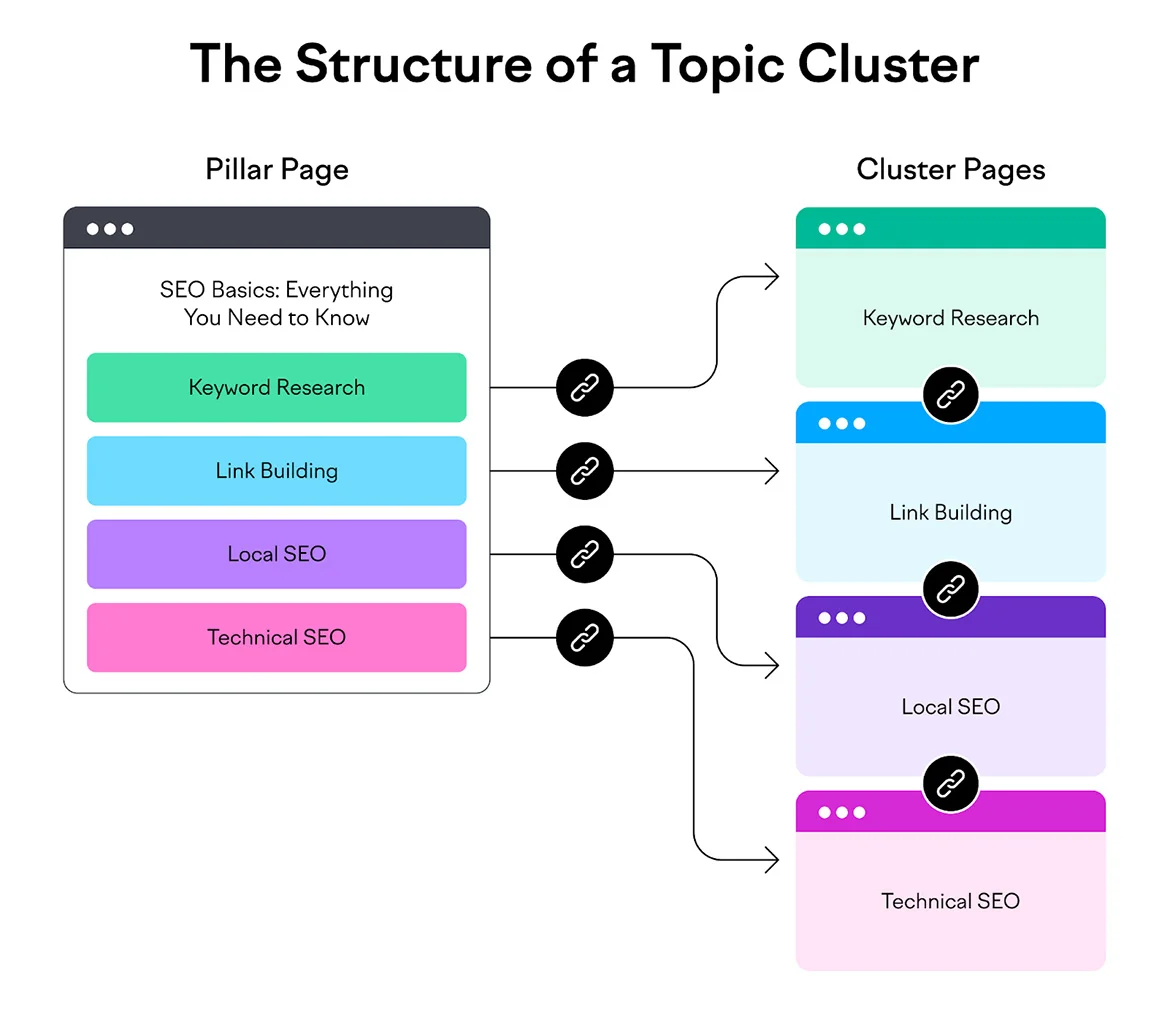 Organizing your content into topic clusters with pillar content at the center is a powerful strategy to boost your website’s authority on specific subjects. This strategy organizes your content into main “pillar” pages that cover broad topics, supported by related cluster articles. It improves site structure, boosts authority, and signals to search engines that your site covers topics in depth.
Organizing your content into topic clusters with pillar content at the center is a powerful strategy to boost your website’s authority on specific subjects. This strategy organizes your content into main “pillar” pages that cover broad topics, supported by related cluster articles. It improves site structure, boosts authority, and signals to search engines that your site covers topics in depth.
Content Architecture Mastery
Identify Core Topics:
Analyze your industry and identify core topics relevant to your audience. These topics should be broad, covering key aspects of your niche.Create Pillar Content:
Develop comprehensive, in-depth pillar content for each core topic. Ensure it serves as a foundational resource for the topic.Cluster Content:
Create supporting content (cluster content) that delves into specific subtopics related to the core topic. Link cluster content back to the pillar page and interlink between cluster pages.2. Technical SEO Optimization
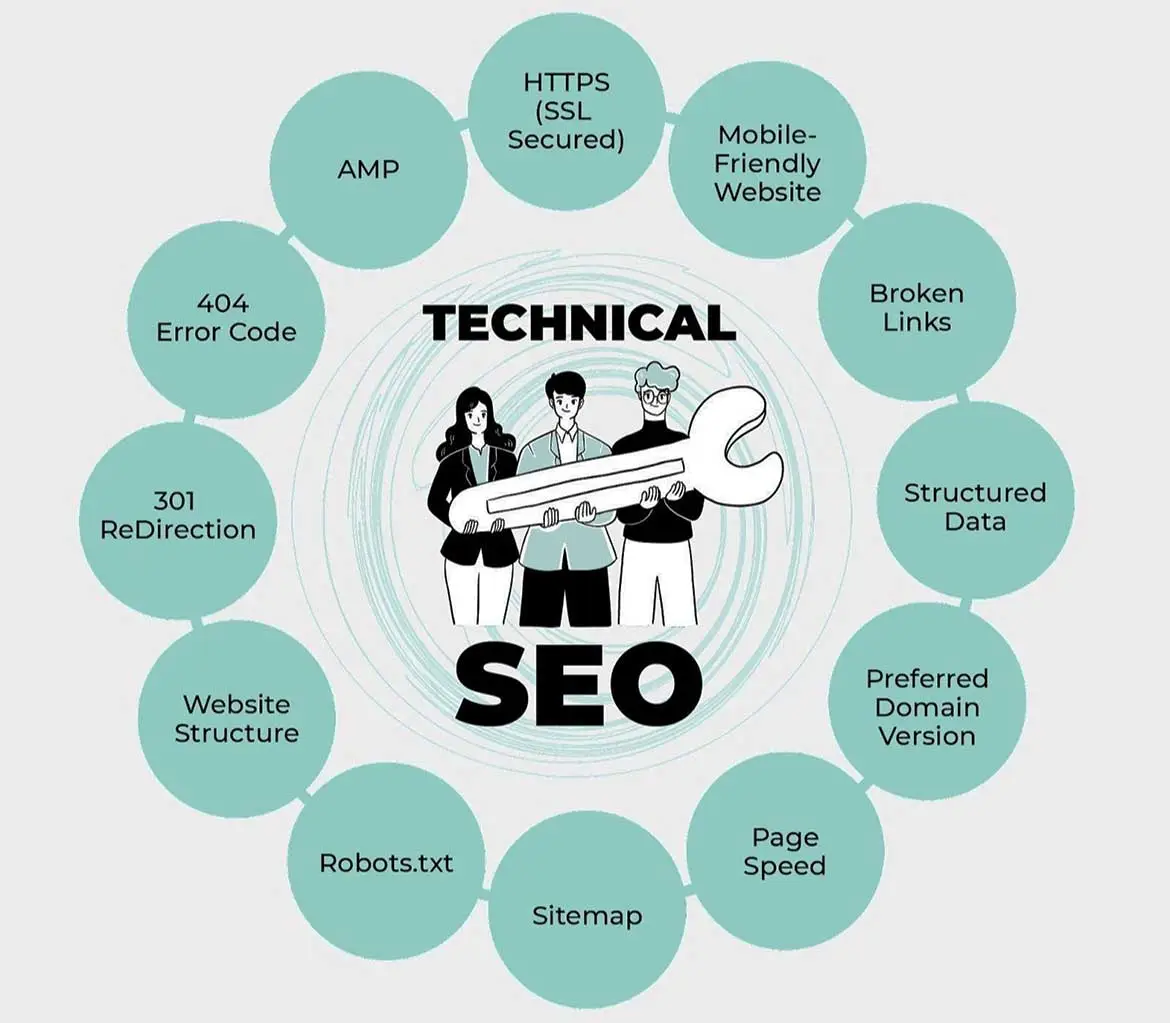 Technical SEO ensures your website is fast, crawlable, and indexable. It includes fixing site errors, optimizing sitemaps, improving Core Web Vitals, and enhancing security (HTTPS), all of which directly impact rankings. Beyond on-page SEO, technical optimization ensures your website is search engine-friendly, improving its overall performance.
Technical SEO ensures your website is fast, crawlable, and indexable. It includes fixing site errors, optimizing sitemaps, improving Core Web Vitals, and enhancing security (HTTPS), all of which directly impact rankings. Beyond on-page SEO, technical optimization ensures your website is search engine-friendly, improving its overall performance.
Building a Strong Search Foundation
Optimize Page Speed:
Use tools like Google PageSpeed Insights to identify and resolve speed issues. Optimize images, leverage browser caching, and consider content delivery networks (CDNs).Mobile Responsiveness:
Ensure your website is mobile-friendly and responsive. Google prioritizes mobile-first indexing, making mobile optimization crucial.Structured Data Markup:
Implement Schema markup to provide structured data to search engines. Enhance rich snippets, improving the visibility of your content.3. Voice Search Optimization
 With more users searching via smart speakers and mobile voice assistants, optimizing for conversational keywords, FAQs, and natural language helps capture this growing search trend. Optimizing your content for voice search is essential as more users are turning to voice-activated devices.
With more users searching via smart speakers and mobile voice assistants, optimizing for conversational keywords, FAQs, and natural language helps capture this growing search trend. Optimizing your content for voice search is essential as more users are turning to voice-activated devices.
Speak Your Way to Rankings
Natural Language Keywords:
Use conversational, long-tail keywords reflecting how people speak. Optimize content to answer common voice search queries.FAQ Sections:
Include an FAQ section on key pages to address specific questions. Voice search often involves asking direct questions.Local Optimization:
Optimize for local search, as voice searches often have local intent. Claim and optimize your Google My Business listing.4. User Experience (UX) Enhancement
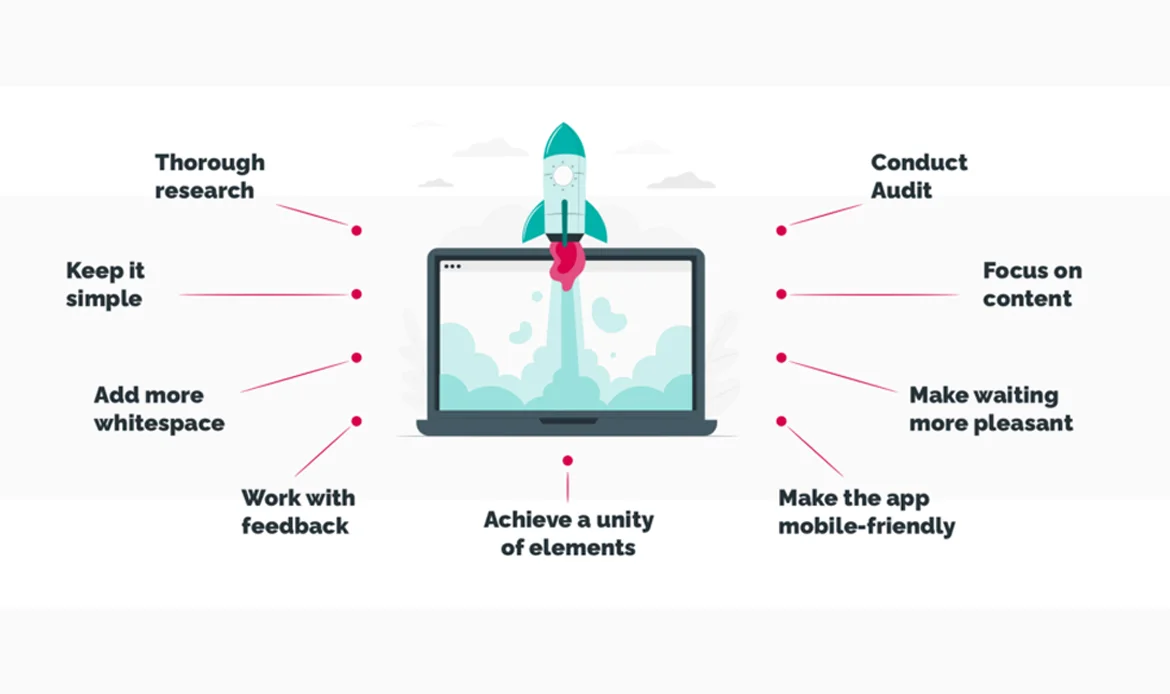 A seamless UX improves engagement and reduces bounce rates. Elements like mobile responsiveness, intuitive navigation, and fast-loading pages not only please users but also satisfy Google’s ranking signals. Prioritizing user experience goes beyond traditional SEO, influencing how users interact with your site and, consequently, your search rankings.
A seamless UX improves engagement and reduces bounce rates. Elements like mobile responsiveness, intuitive navigation, and fast-loading pages not only please users but also satisfy Google’s ranking signals. Prioritizing user experience goes beyond traditional SEO, influencing how users interact with your site and, consequently, your search rankings.
Designing for Search and Satisfaction
Site Navigation:
Optimize website navigation for ease of use. Implement a clear and intuitive menu structure.Reduce Bounce Rates:
Analyze high-bounce-rate pages and improve content and design. Provide clear calls-to-action to encourage engagement.Responsive Design:
Ensure your website design is responsive to different devices. Test and optimize for various screen sizes and resolutions.5. Influencer Collaboration and Digital PR
 Working with influencers and building strong PR campaigns generates high-quality backlinks, brand mentions, and authority signals, strengthening your website’s visibility in search. Building authoritative backlinks through influencer collaboration and digital PR efforts can significantly impact your website’s SEO.
Working with influencers and building strong PR campaigns generates high-quality backlinks, brand mentions, and authority signals, strengthening your website’s visibility in search. Building authoritative backlinks through influencer collaboration and digital PR efforts can significantly impact your website’s SEO.
Authority Through Partnerships
Identify Influencers:
Identify influencers in your industry or niche. Look for individuals with a strong online presence and relevance to your content.Collaboration and Mentions:
Reach out to influencers for collaboration opportunities. Encourage mentions and backlinks through shared content.Digital PR Campaigns:
Develop digital PR campaigns to generate media coverage. Leverage press releases, interviews, and other PR strategies to gain authoritative backlinks.6. User-Generated Content Optimization
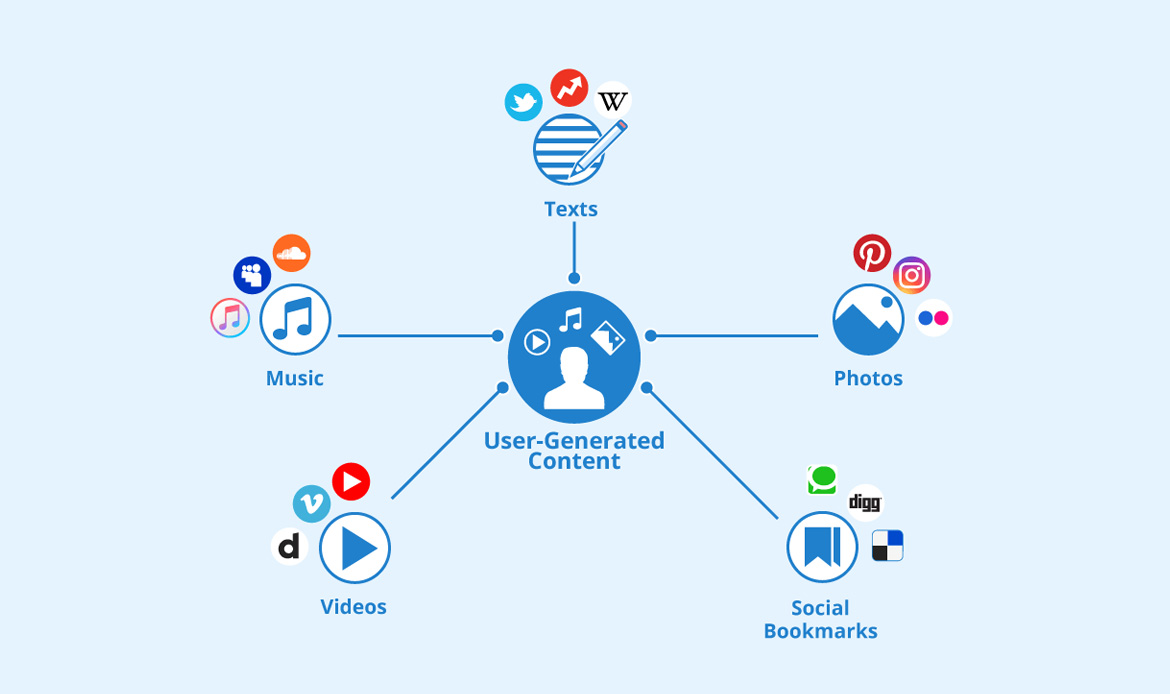 Reviews, testimonials, and community-driven content add authenticity. Optimizing this content improves trust, provides fresh SEO signals, and increases keyword diversity. Leveraging user-generated content (UGC) not only fosters community engagement but can also positively impact your SEO efforts.
Reviews, testimonials, and community-driven content add authenticity. Optimizing this content improves trust, provides fresh SEO signals, and increases keyword diversity. Leveraging user-generated content (UGC) not only fosters community engagement but can also positively impact your SEO efforts.
Harnessing Authentic Voices
Encourage User Reviews and Comments:
Encourage users to leave reviews and comments on your products or content. Respond promptly to user-generated content to foster a sense of community.Moderate and Curate Content:
Moderate user-generated content to ensure quality and relevance. Curate valuable user-generated content and incorporate it into your SEO strategy.Optimize for Long-Tail Keywords:
Analyze user-generated content for long-tail keywords used by your audience. Optimize your content strategy to incorporate these keywords naturally.7. AI-Powered Content Generation
 Artificial intelligence tools can assist in keyword research, content drafting, and optimization, helping scale content production while maintaining SEO relevance. Embracing artificial intelligence (AI) for content generation can streamline the process and enhance the relevance of your content.
Artificial intelligence tools can assist in keyword research, content drafting, and optimization, helping scale content production while maintaining SEO relevance. Embracing artificial intelligence (AI) for content generation can streamline the process and enhance the relevance of your content.
Smarter, Faster, SEO-Ready Content
Utilize AI Tools:
Explore AI-powered content generation tools that analyze trends and user behavior. Use these tools to generate content ideas and optimize existing content.Personalize User Experiences:
Implement AI-driven personalization to tailor content to individual user preferences. Provide personalized recommendations and experiences based on user behavior.Optimize for Voice Search:
Leverage AI to understand and optimize for conversational language used in voice search queries. Develop content that directly answers voice search questions.8. Video SEO Optimization
 Video is highly engaging and favored by search engines. Optimizing titles, descriptions, transcripts, and schema markup helps videos rank on both Google and YouTube. With the increasing popularity of video content, optimizing your videos for search engines is crucial for a comprehensive SEO strategy.
Video is highly engaging and favored by search engines. Optimizing titles, descriptions, transcripts, and schema markup helps videos rank on both Google and YouTube. With the increasing popularity of video content, optimizing your videos for search engines is crucial for a comprehensive SEO strategy.
Ranking Through Visual Storytelling
Create Engaging Video Content:
Develop high-quality and engaging video content relevant to your audience. Optimize video titles, descriptions, and tags with relevant keywords.Transcribe Videos:
Transcribe your videos and include the transcript in the description. This makes your content accessible and provides search engines with more context.Utilize Video Sitemaps:
Create and submit a video sitemap to Google Search Console. This helps search engines understand the structure and content of your video assets.9. Localized SEO Strategies
 For local businesses, optimizing Google Business Profiles, local keywords, and location-based content helps dominate local searches and attract nearby customers. Tailoring your SEO strategy to local audiences is essential for businesses with a physical presence.
For local businesses, optimizing Google Business Profiles, local keywords, and location-based content helps dominate local searches and attract nearby customers. Tailoring your SEO strategy to local audiences is essential for businesses with a physical presence.
Winning Search in Your Neighborhood
Local Keyword Optimization:
Integrate local keywords into your content, meta tags, and descriptions. Optimize for “near me” searches by providing location-specific information.Google My Business Optimization:
Optimize your Google My Business profile with accurate information. Encourage and respond to customer reviews on your Google My Business listing.Local Backlink Building:
Build local backlinks by collaborating with local businesses and organizations. Participate in community events and sponsorships to increase local visibility.10. Social Listening and SEO Integration
 Monitoring social conversations gives insight into trending topics and user intent. Integrating these insights into SEO helps create content that aligns with audience needs. Integrating social listening into your SEO strategy allows you to tap into real-time conversations and trends.
Monitoring social conversations gives insight into trending topics and user intent. Integrating these insights into SEO helps create content that aligns with audience needs. Integrating social listening into your SEO strategy allows you to tap into real-time conversations and trends.
Insights That Drive Search Impact
Identify Relevant Social Platforms:
Determine which social platforms are most relevant to your audience. Monitor conversations and trends related to your industry or niche.Optimize Social Media Profiles:
Optimize your social media profiles with relevant keywords. Share and promote your content on social media to drive traffic and engagement.Incorporate Social Signals:
While not a direct ranking factor, social signals can indirectly impact SEO. Encourage social sharing and engagement to enhance your content’s visibility.11. Content Siloing and Internal Linking
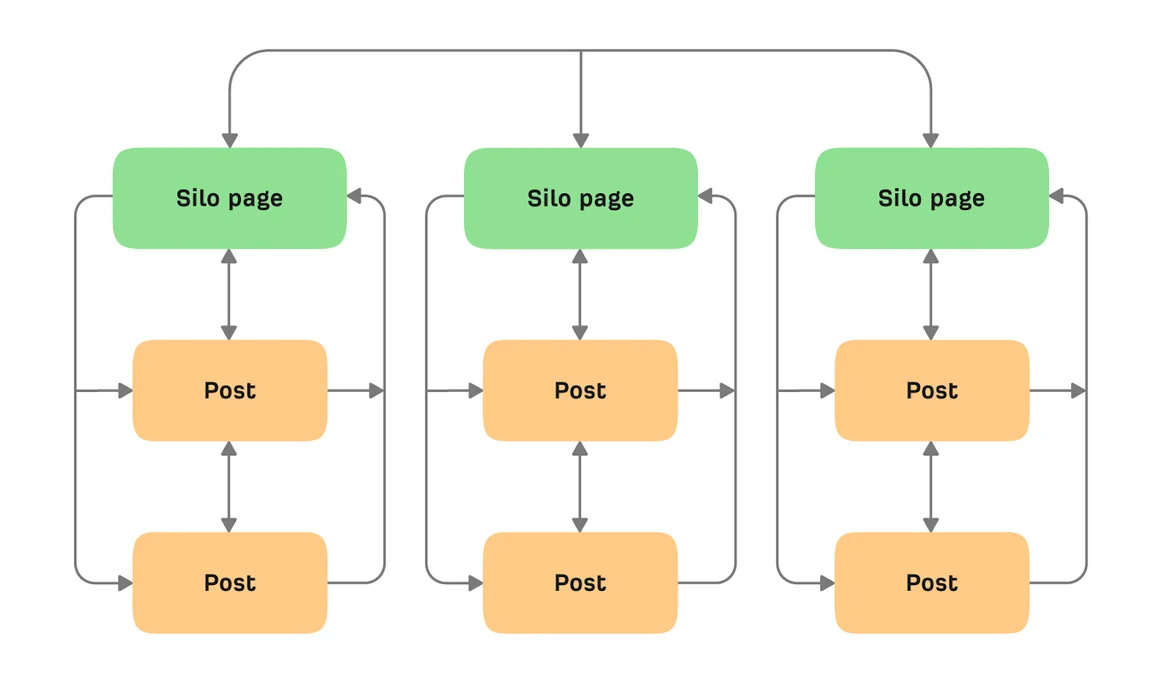 Organizing content into silos and linking strategically helps search engines understand relationships between topics, improving crawl efficiency and authority distribution. Content siloing involves organizing your website content into thematic silos, with internal linking to establish hierarchy and relevance.
Organizing content into silos and linking strategically helps search engines understand relationships between topics, improving crawl efficiency and authority distribution. Content siloing involves organizing your website content into thematic silos, with internal linking to establish hierarchy and relevance.
Structuring Paths for Search Engines
Topic Categorization:
Categorize your content into specific themes or topics. Create content hubs or silos for each category.Internal Linking:
Implement strategic internal linking between related articles within a silo. Use descriptive anchor text to indicate the content’s relevance.Hierarchy Optimization:
Establish a hierarchical structure within silos, emphasizing the pillar content. Ensure a clear path for users and search engines to navigate through related content.12. Mobile-First Indexing Optimization
 Google primarily indexes the mobile version of websites. Ensuring mobile responsiveness, fast load times, and streamlined layouts is critical for rankings. Given Google’s mobile-first indexing approach, optimizing your website for mobile devices is critical.
Google primarily indexes the mobile version of websites. Ensuring mobile responsiveness, fast load times, and streamlined layouts is critical for rankings. Given Google’s mobile-first indexing approach, optimizing your website for mobile devices is critical.
SEO in the Palm of Your Hand
Responsive Design:
Ensure your website design is responsive to various screen sizes. Test and optimize the user experience on different mobile devices.Mobile-Friendly Content:
Prioritize concise and easily readable content for mobile users. Optimize images and multimedia elements for mobile loading.Structured Data for Mobile:
Implement structured data markup specifically for mobile content. Verify mobile-friendly status using Google’s Mobile-Friendly Test.13. AI-Enhanced SEO Analytics
 AI-driven analytics tools provide deeper insights into user behavior, keyword opportunities, and predictive performance, allowing for smarter SEO decision-making. Leveraging artificial intelligence for SEO analytics can provide deeper insights and aid in data-driven decision-making.
AI-driven analytics tools provide deeper insights into user behavior, keyword opportunities, and predictive performance, allowing for smarter SEO decision-making. Leveraging artificial intelligence for SEO analytics can provide deeper insights and aid in data-driven decision-making.
Smarter Decisions with Data
AI-Driven Analytics Tools:
Explore analytics tools that incorporate AI for data analysis. Use AI to identify patterns, user behavior, and emerging trends.Predictive Analytics:
Implement predictive analytics to forecast future SEO trends. Use AI insights to refine content strategies and keyword targeting.Behavioral Analysis:
Utilize AI to analyze user behavior on your website. Tailor your content and user experience based on behavioral insights.14. Advanced SEO Techniques for Interactive Content
 Quizzes, polls, infographics, and interactive tools increase engagement, dwell time, and shares—all positive signals for SEO. Engaging your audience with interactive and multimedia content can boost user experience and SEO.
Quizzes, polls, infographics, and interactive tools increase engagement, dwell time, and shares—all positive signals for SEO. Engaging your audience with interactive and multimedia content can boost user experience and SEO.
Engaging Audiences, Boosting SEO
Infographics and Visuals:
Create visually appealing infographics to convey information. Optimize image alt text and filenames for SEO.Interactive Tools and Widgets:
Develop interactive tools or widgets relevant to your niche. Encourage user interaction and sharing.Video Integration:
Expand your video strategy with interactive elements. Implement annotations, quizzes, or links within videos to enhance engagement.15. E-A-T (Expertise, Authoritativeness, Trustworthiness)
 Google rewards websites that demonstrate credibility. Publishing expert content, earning authoritative backlinks, and maintaining transparency build stronger rankings. Google values websites with high E-A-T, emphasizing expertise, authoritativeness, and trustworthiness.
Google rewards websites that demonstrate credibility. Publishing expert content, earning authoritative backlinks, and maintaining transparency build stronger rankings. Google values websites with high E-A-T, emphasizing expertise, authoritativeness, and trustworthiness.
Building Credibility for Higher Rankings
Expert Content Creation:
Showcase your expertise through in-depth, well-researched content. Author content that establishes you as an authority in your field.Author Profiles and Bios:
Create detailed author profiles for content creators. Highlight their expertise, credentials, and experience.Backlink Quality:
Focus on high-quality backlinks from authoritative sources. Avoid low-quality links that may impact trustworthiness.FAQs on Advanced SEO Techniques for Website Domination
What are advanced SEO techniques for website domination?
Advanced SEO techniques go beyond the basics of keyword research and on-page optimization. They include strategies like technical SEO, topic clusters, AI-powered content, voice search optimization, and competitor analysis to achieve higher visibility and dominate search rankings.
How can mastering advanced SEO help my website dominate search results?
By mastering advanced SEO, you improve not only keyword rankings but also user experience, authority, and trust. These techniques ensure your website attracts qualified traffic, ranks above competitors, and maintains long-term growth in organic search.
Is advanced SEO suitable for small businesses aiming for website domination?
Yes. Even small businesses can dominate their niche by implementing advanced SEO strategies such as local SEO, video optimization, and E-A-T principles. With the right approach, smaller sites can compete against bigger brands effectively.
Final Thoughts
In conclusion, mastering Advanced SEO Techniques empowers businesses to stay ahead in the ever-evolving digital landscape. We’ve navigated through the intricacies of SEO, unveiling strategies designed to not only keep pace with industry changes but to surge ahead. Armed with advanced SEO insights, you now possess the keys to fortify your website’s visibility, enhance user engagement, and secure top-tier rankings. From strategic content optimization to leveraging the latest SEO trends, your toolkit is now enriched with practices that set you apart in the digital landscape.Start Dominating Search Engines Today
Boost your online visibility with our SEO-optimized WordPress themes, built to help your website climb the search rankings effortlessly. Whether you run a business, blog, or eCommerce store, our themes are designed for speed, performance, and Google-friendly structure, ensuring your content gets the attention it deserves.


